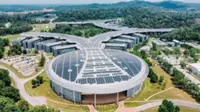KLANG: The flood situation in the country is expected to worsen, especially in the west coast due to climate change, experts say.
Universiti Sains Malaysia (USM) Centre for Marine and Coastal Studies director Prof Datuk Dr Aileen Tan Shau Hwai said a higher frequency of extreme weather, such as heatwaves and storms, is expected.
Uh-oh! Daily quota reached.









































